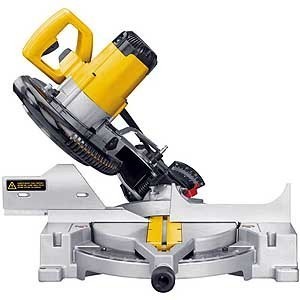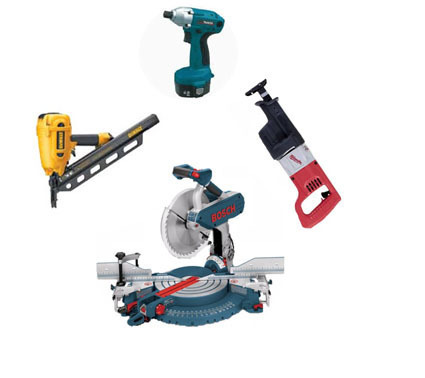Types of Power Tools. Some say there are two basic groups of power tools: professional and homeowner. It’s more helpful to think of power tools in four categories: light use, DIY, contractor, and high-end. Of course, there’s plenty of overlap, and no particular manufacturer makes tools in only one category.
- Light use tools are those designed for light-duty, occasional use around the home: assembling furniture, hanging blinds or artwork, minor repair work, etc. These tools are usually found at general retail stores and home centers.
Determining Your Needs. The most important rule when purchasing power tools: be honest. Be honest about your expectations, and the intended use of the tool. Don’t expect a 9-volt cordless drill to bore holes into concrete, and, on the other hand, there’s no need to purchase a $4,000 cabinetmakers [table] saw to add on a deck.
Secondly, don’t sell yourself, or your ambitions, short. You might not need a particular feature for a current project, but as your skills and ambition progress, it may become a useful or even necessary part of your process. Look for items that will always have a use around your workspace and in your projects.
When thinking about your intended use, determine if your projects will be mostly decorative or constructive. For many styles of cuts, there are handheld and stationary models intended for the same purpose: a circular saw and table saw, a jigsaw and bandsaw, coping saw and scroll saw, etc. Do your cuts need to be joinery perfect, or just to trim something to size? If you only need to cut plywood to shape for paintings or basic shelving, a circular saw is perfectly adequate. Cutting out shapes for a hanging room divider only requires a jigsaw, not a 14” band saw.
Look at the types of tools listed above: which describes your current ‘identity’? Which describes your goals? Are you simply a homeowner who’s looking to maintain an investment? Are you looking to do the work of a professional or contractor both to save money and simply because you can?
Purchasing Power Tools. When testing out tools, visit lots of kinds of stores: woodworking shops, hardware stores, big box stores, etc. Touch every one you can. What kind of materials is it made of? Is it heavy for its size? Is the display model damaged?
Next, note the brands, the prices, and the specs on the powers. Generally, more volts and higher rpms do indicate a more powerful tool, but don’t get obsessed with numbers. Write down some models, then do some research, Woodworking and homeowner magazines do annual tool reviews and special publications. Use the internet wisely: check consumer websites, woodworking forums, Amazon, etc. Be wary of reviews by the laity: when wannabe fine-woodworkers interact with a DIY tool, they’ll surely scoff at its limited capabilities. Listen to critiques of the manufacturing product: parts that are easily broken, inaccurate scales, poor customer service, etc.

For the average, ambitious homeowner owner, tools intended for the DIY market are usually perfectly adequate. It’s best to hover around the flagship products from manufacturers of DIY-aimed tools to the basic models of contractor-aimed brands. For example, the 12” sliding double-bevel compound miter saw from Dewalt might be overkill for making picture frames, but the 10” compound model might be excellent. (It is, I have one.) If you can’t afford the tool now, wait. Don’t buy a crummy proprietary router because just because you want a router; save your money and project ideas until you can get a capable model that suits your needs and budget.
[Images from CharlesandHudson.com, poulsenacehardware.com, and dewalt.com]
